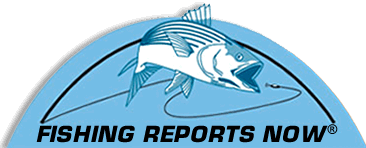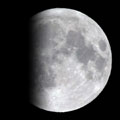ASMFC Increases Fluke, Scup Quotas;
Decreases Sea Bass, Blues
Decreases Sea Bass, Blues
From the Atlantic States Marine Fisheries Commission:
FOR IMMEDIATE RELEASE, AUGUST 20, 2010
ASMFC & Mid-Atlantic Council Approve 2011 TALs
For Summer Flounder, Scup, Black Sea Bass and Bluefish
For Summer Flounder, Scup, Black Sea Bass and Bluefish
Philadelphia, PA – The Commission and the Mid-Atlantic Fishery Management Council (Council) have established the 2011 total allowable landings (TAL) limits for summer flounder, scup, black sea bass, and bluefish. The Commission's actions are final and apply to state waters. The Council will be forwarding its recommendations to NOAA's Northeast Regional Administrator for final approval. The table below summarizes those actions/recommendations (TALs and recreational harvest limits are in millions of pounds):
Species |
TAL |
Commercial Quota |
Minimum Fish Size (TL) |
Mesh Size |
Recreational Harvest Limit |
Summer Flounder |
29.48 |
17.69 |
14" |
5.5" |
11.79 |
Scup |
20 |
15.6 |
9" |
5" |
4.4 |
Black Sea Bass |
3.6 |
1.76 |
11" |
4.5" |
1.84 |
Bluefish |
27.29 |
4.64 |
--- |
--- |
22.65 |
The Commission and Council approved an increase in the 2011 summer flounder TAL by 7.35 million pounds when compared to the 2010 quota level. This results in a commercial quota of 17.69 million pounds and a recreational harvest limit of 11.79 million pounds for the 2011 fishing year. This action was consistent with the recommendations of the Scientific and Statistical Committee (SSC) regarding acceptable biological catch (ABC). The Monitoring Committee (MC) recommend a slightly lower TAL of 28.93 million pounds to reduce the risk of overfishing in 2011 due to a strong retrospective pattern in recruitment in the past 3 years (meaning the model overestimates the number of age 0 fish coming into the population). The 2010 stock assessment update indicates a projected stock biomass for 2009 at approximately 89% of its rebuilding target.
For the 2011 scup fishery, both the Commission and Council set a TAL of 20 million pounds, an increase of 6.5 million pounds compared to 2010. Based on the recommendations of the SSC and MC, the Commission took a precautionary approach in setting the scup TAL in light of the scientific uncertainty surrounding the scup assessment model. Specifically, the uncertainty about the dynamics of
older fish in the stock (current surveys do not do a good job of capturing fish older than age 2), and poorly estimated discards, which are a significant component of fishing mortality. Both committees recommend a continued stepwise increase in the quota. The Board adopted a new weekly landing limit to not exceed 30,000 pounds for the Winter I fishery (January 1-April 30), previously it was a two-week landing limit.
Following the SSC's ABC recommendation and advice from the MC, both the Commission and Council adopted a 3.6 million pound TAL for 2011 black sea bass fishery, this is 100,000 pounds less than 2010. As with scup, the Commission took a precautionary approach in setting the black sea bass TAL due to concerns regarding scientific uncertainty in the assessment model. These include the sensitivity and reliability of the model, the uncertainty inherent in assessing a species with an unusual life history (some females change sex to become males), the presence of a retrospective pattern which tends to overestimate stock size, and the adequacy of fishery-independent surveys in sampling this species.
The Commission and Council adopted a bluefish TAL of 27.29 million pounds for 2011, which is a small decrease from the 2010 TAL of 29.26 million pounds. The 2010 stock assessment update indicates a projected stock biomass for 2009 at approximately 106% of its rebuilding target, which is a slight decline from 2008. The stock was declared rebuilt in 2009, which was a year ahead of the original stock rebuilding deadline. Under the current fishery management plan, the commercial fishery will be allocated 4.64 million pounds and the recreational sector will be allocated 22.65 million pounds. Later this year when recreational landings are available, the commercial sector could receive a transfer from the recreational sector of up to 4.77 million pounds in quota. The recreational possession limit remained at a 15 fish limit, which is consistent with 2010. In recent years recreational landings have increased, but the overall TAL for the fishery has not been exceeded. These actions were consistent with the recommendations of the SSC and MC.
The Commission and Council maintained the 2010 commercial management measures for all four species for 2011, with the exception of the Winter I landing limit, and approved a Research Set-Aside (RSA) quota of up to three percent for each fishery. Prior to the start of the new fishing year, RSA quota allocations will reduce the above TALs and related allocations. For more information about summer flounder, scup, or black sea bass, please contact Toni Kerns, FMP Coordinator, at (202) 289-6400 or <tkerns@asmfc.org>. For more information about bluefish, please contact Kate Taylor, FMP Coordinator, at (202) 289-6400 or <ktaylor@asmfc.org>.
###
*************************
Tina Berger
Public Affairs Specialist
Atlantic States Marine Fisheries Commission
1444 I Street. NW, Sixth Floor
Washington, DC 20005
Phone: (202)289-6400
FAX: (202)289-6051
Email: tberger@asmfc.org
www.asmfc.org
ASMFC Vision: Healthy, self-sustaining populations for all Atlantic coast fish species or successful restoration well in progress by the year 2015.





